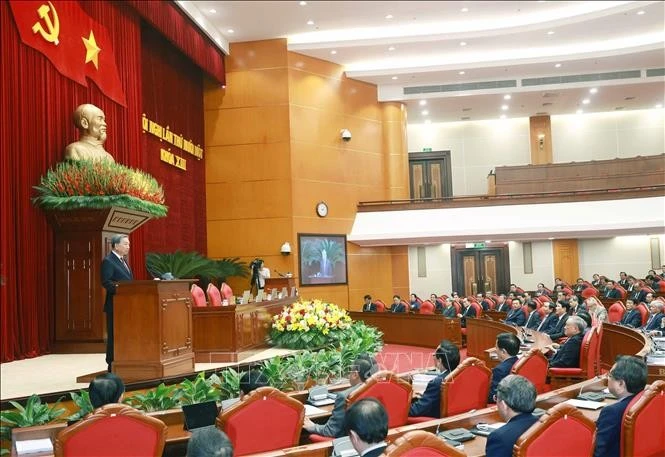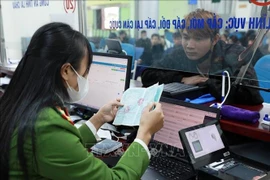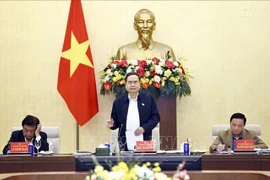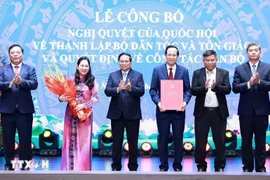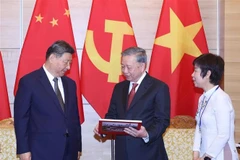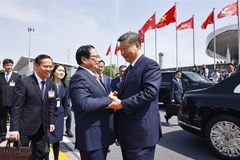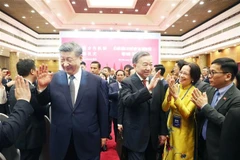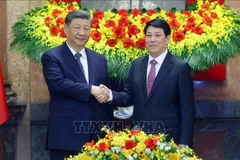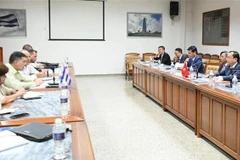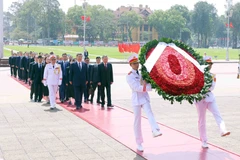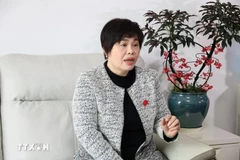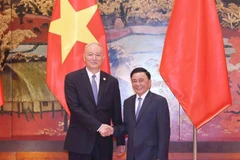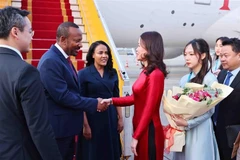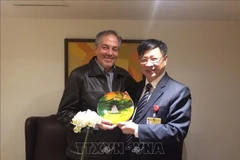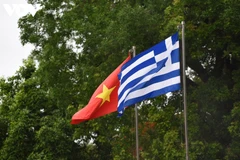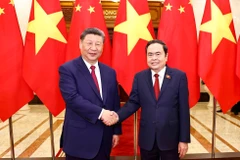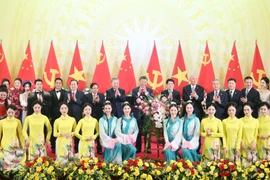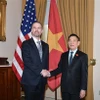Hanoi (VNA) – The 11th plenum of the 13th Party Central Committee has agreed with the proposed plans concerning the continued restructuring of the political apparatus, rearranging administrative units and organising local administrations with provincial and communal levels.
Under the new model, the country will comprise 34 provincial-level units (28 provinces and six centrally-run cities), down from the current 63.
The following is the provisional list of proposed names for provinces, cities, and political-administrative centres (provincial capitals) of 34 provincial-level administrative units, as attached to Resolution No. 60-NQ/TW dated April 12, 2025, issued at the 11th plenum:
I. Provincial-level administrative units remaining unchanged
1. Hanoi city
2. Hue city
3. Lai Chau province
4. Dien Bien province
5. Son La province
6. Lang Son province
7. Quang Ninh province
8. Thanh Hoa province
9. Nghe An province
10. Ha Tinh province
11. Cao Bang province
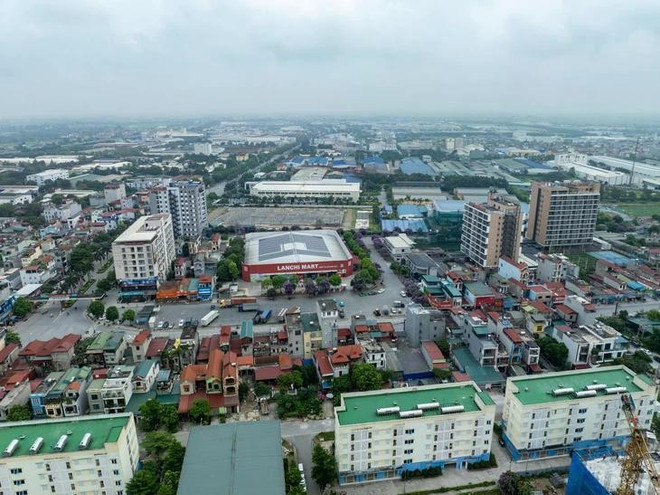
II. Newly-formed provincial-level administrative units
1. Tuyen Quang and Ha Giang provinces will merge to form Tuyen Quang province, with the political - administrative centre located in present-day Tuyen Quang.
2. Lao Cai and Yen Bai provinces will merge to form Lao Cai province, with the political - administrative centre located in present-day Yen Bai.
3. Bac Kan and Thai Nguyen provinces will merge to form Thai Nguyen province, with the political - administrative centre located in present-day Thai Nguyen.
4. Vinh Phuc, Phu Tho, and Hoa Binh provinces will merge to form Phu Tho province, with the political - administrative centre located in present-day Phu Tho.
5. Bac Ninh and Bac Giang provinces will merge to form Bac Ninh province, with the political - administrative centre located in present-day Bac Giang.
6. Hung Yen and Thai Binh provinces will merge to form Hung Yen province, with the political - administrative centre located in present-day Hung Yen.
7. Hai Duong province and Hai Phong city will merge to form Hai Phong city, with the political - administrative centre located in present-day Hai Phong city.
8. Ha Nam, Ninh Binh, and Nam Dinh provinces will merge to form Ninh Binh province, with the political - administrative centre located in present-day Ninh Binh.
9. Quang Binh and Quang Tri provinces will merge to form Quang Tri province, with the political - administrative centrelocated in present-day Quang Binh.
10. Quang Nam province and Da Nang city will merge to form Da Nang city, with the political - administrative centre located in present-day Da Nang city.
11. Kon Tum and Quang Ngai provinces will merge to form Quang Ngai province, with the political - administrative centre located in present-day Quang Ngai.
12. Gia Lai and Binh Dinh provinces will merge to form Gia Lai province, with the political - administrative centre located in present-day Binh Dinh.
13. Ninh Thuan and Khanh Hoa provinces will merge to form Khanh Hoa province, with the political - administrative centre located in present-day Khanh Hoa.
14. Lam Dong, Dak Nong, and Binh Thuan provinces will merge to form Lam Dong province, with the political - administrative centre located in present-day Lam Dong.
15. Dak Lak and Phu Yen provinces will merge to form Dak Lak province, with the political - administrative centre located in present-day Dak Lak.
16. Ba Ria-Vung Tau province, Binh Duong province, and Ho Chi Minh City will merge to form Ho Chi Minh City, with the political - administrative centre located in present-day Ho Chi Minh City.
17. Dong Nai and Binh Phuoc provinces will merge to form Dong Nai province, with the political - administrative centre located in present-day Dong Nai.
18. Tay Ninh and Long An provinces will merge to form Tay Ninh province, with the political - administrative centre located in present-day Long An.
19. Can Tho city, Soc Trang province, and Hau Giang province will merge to form Can Tho city, with the political - administrative centre located in present-day Can Tho city.
20. Ben Tre, Vinh Long, and Tra Vinh provinces will merge to form Vinh Long province, with the political - administrative centre located in present-day Vinh Long.
21. Tien Giang and Dong Thap provinces will merge to form Dong Thap province, with the political - administrative centre located in present-day Tien Giang.
22. Bac Lieu and Ca Mau provinces will merge to form Ca Mau province, with the political - administrative centre located in present-day Ca Mau.
23. An Giang and Kien Giang provinces will merge to form An Giang province, with the political - administrative centre located in present-day Kien Giang./.
